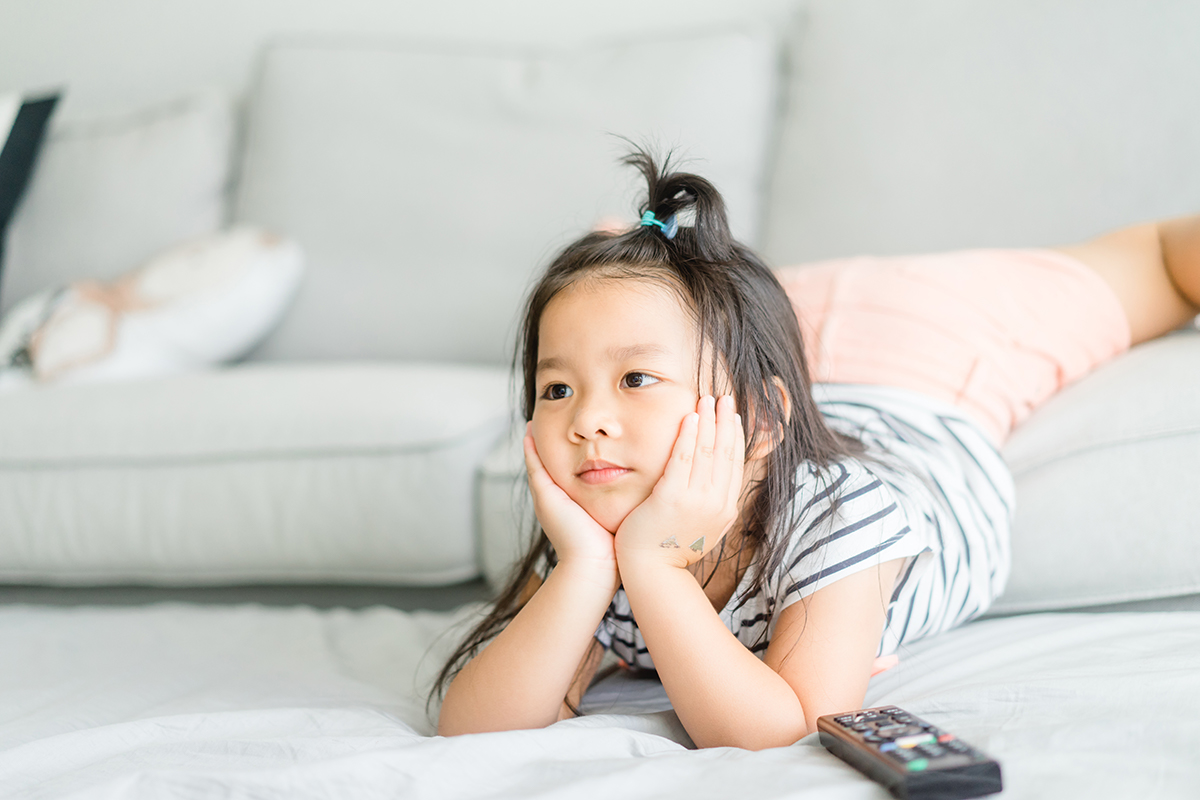Written by Kim Wilson, Ryerson University; Adrianna Ruggiero, Ryerson University; Colleen Russo Johnson, Ryerson University; Josanne Buchanan, Ryerson University. Photo credit: Shutterstock. Originally published in The Conversation.
Children’s television has grown increasingly diverse, reflecting an awareness of the importance of inclusion and representation. ![]()
On Jan. 5, PBS Kids announced it was going to stop airing Caillou, a children’s show whose run on TV spanned 24 years. A mix of reactions spilled onto to social media, with some celebrating the show’s cancellation and others saddened by the end of their childhood show.
Over the years, there have been strong opinions about the show’s portrayal of a full range of child emotions, including temper tantrums, that were intended to spark meaningful conversations between parents and kids. Indeed, much has been written about Caillou’s whiny voice and constant complaints.
That said, it is also important to look at Caillou and other shows from that era in a different light. Was the children’s media industry representing their viewers at that time? What — if anything — has changed about how children’s shows reflect their audiences since Caillou premiered?
Race and gender in children’s television
Caillou launched on Canada’s Teletoon network in 1997, a time when television programs were very homogeneous in terms of race and gender. An analysis of American network television shows that aired between 1966 and 1992 revealed that out of all characters sampled, 88 per cent were white, only 10 per cent were Black and less than one per cent were Latinx, Asian or Indigenous. These statistics somewhat reflected the population of the United States during the 1990s, when 83 per cent of citizens were white, 12 per cent were Black and 0.8 per cent were Indigenous.
However, the Latinx and Asian communities — which comprised 11 per cent and four per cent of the nation’s population during the 1990s — were critically underrepresented.
Similar homogeneity among characters in terms of gender were also documented in a study published in the same month that Caillou debuted. This report revealed an under-representation of female characters in children’s animated shows. It also found that male and female characters behaved in heavily stereotypical ways.
A lot has changed since Caillou’s debut. Even the youngest members of its preschool target audience are living a new reality that is defined by technological advancements and an increased awareness of racial tension and gender equality. These new complexities have triggered large changes across the children’s media landscape, specifically in terms of race and gender.
A 2017 report that examined the races and genders of main characters in more than 1,000 children’s television shows in the U.S. and Canada revealed that over two-thirds of the characters were white and roughly two-thirds were male.
While it was great to see Caillou have a Black friend in 1997, this report showed that much work still needed to be done in terms of diversity, although research findings had improved since the Caillou era.

Changing the narrative
Some of these changes have been spearheaded by children’s media industry leaders and researchers who believe in the powerful impact that media can have on children. For example, a 2012 study linked watching TV with lower self-esteem in Black and white girls and Black boys, but higher self-esteem in white boys.
In 2017, another study found that Black and Latinx viewers who saw negative, stereotypical portrayals of Black and Latinx characters felt less positive about their social identities. Clearly, in order for all children to be empowered by media, it is crucial that they see themselves positively and accurately represented on screen.
Our recent report from the Ryerson Children’s Media Lab examined 27 animated children’s television programs that premiered in 2018 and 2019 in Canada. We found that the representation of people of colour is now on par with the representation of white characters: 49 per cent of main characters are racialized, with 14 per cent Black, 11 per cent Latinx and 11 per cent East Asian). However, there is still a need for more Indigenous, Middle Eastern and South Asian representations.
There were also some improvements in the gender representation of human characters. However, there was an obvious gender gap among non-human characters: 70 per cent of these characters were male and only 30 per cent were female. Girls can be robots and monsters, too!
Representing children
Along with emphasizing what the research is and how content creators can use it, our report also revealed why it’s so important. When content creators represent children on screen, they are telling their viewers that their identities, experiences and dreams matter.
With this said, it’s imperative that content creators reflect the complete diversity of young viewers by representing a range of genders, races, disabilities, and more. Children today live in a world that is largely diverse, unpredictable and more connected to media than ever before.
Since Caillou debuted in 1997, children’s media has made great progress in capturing the complexities of this new world. Continuing efforts and increased awareness will ensure that all children see themselves fully represented in content that authentically represents them.

